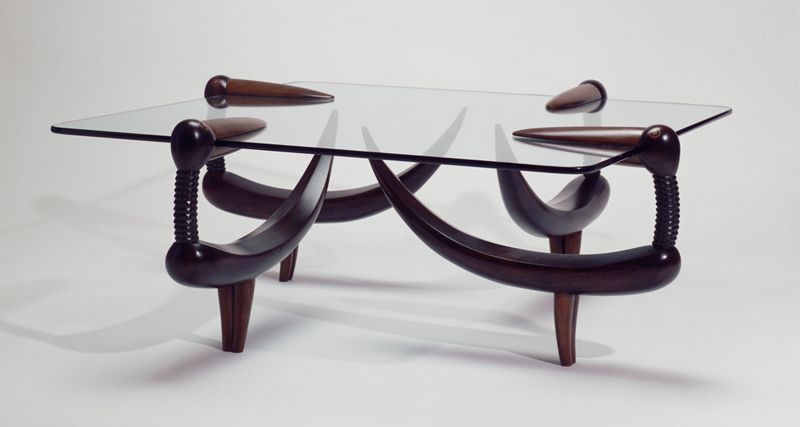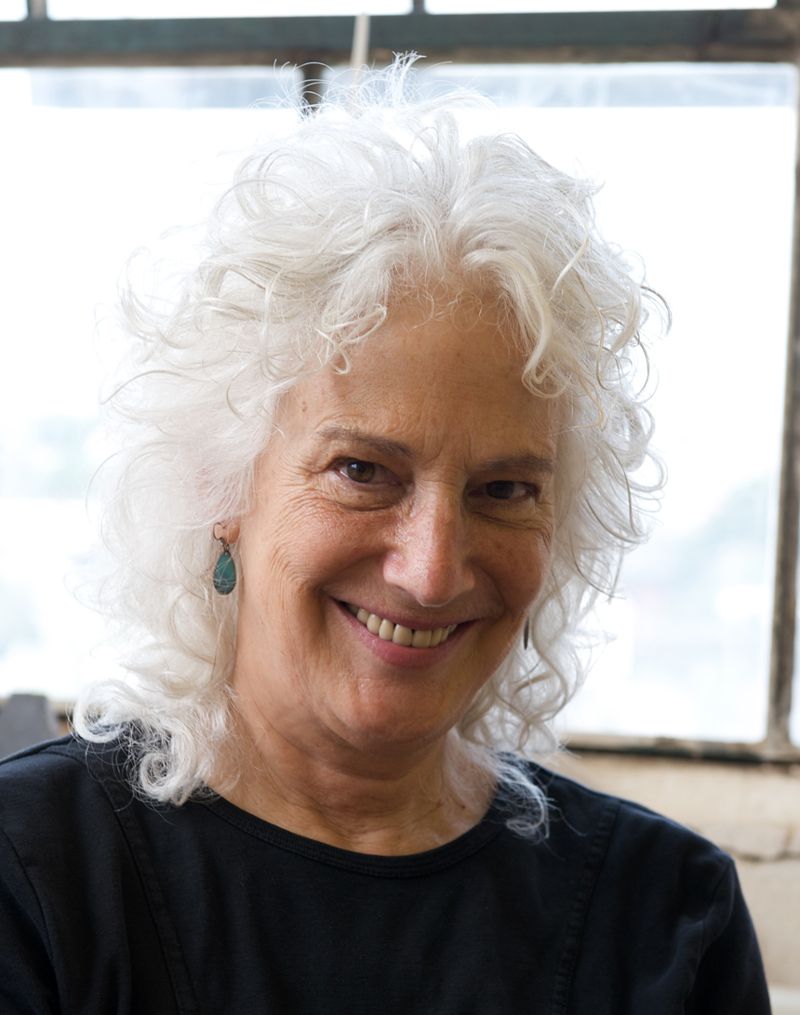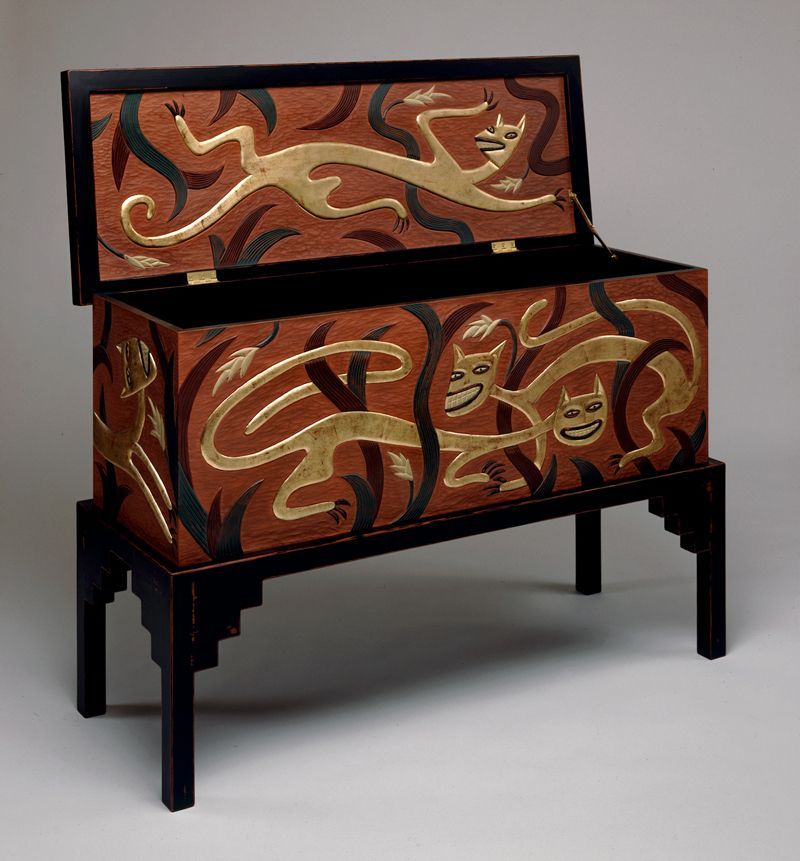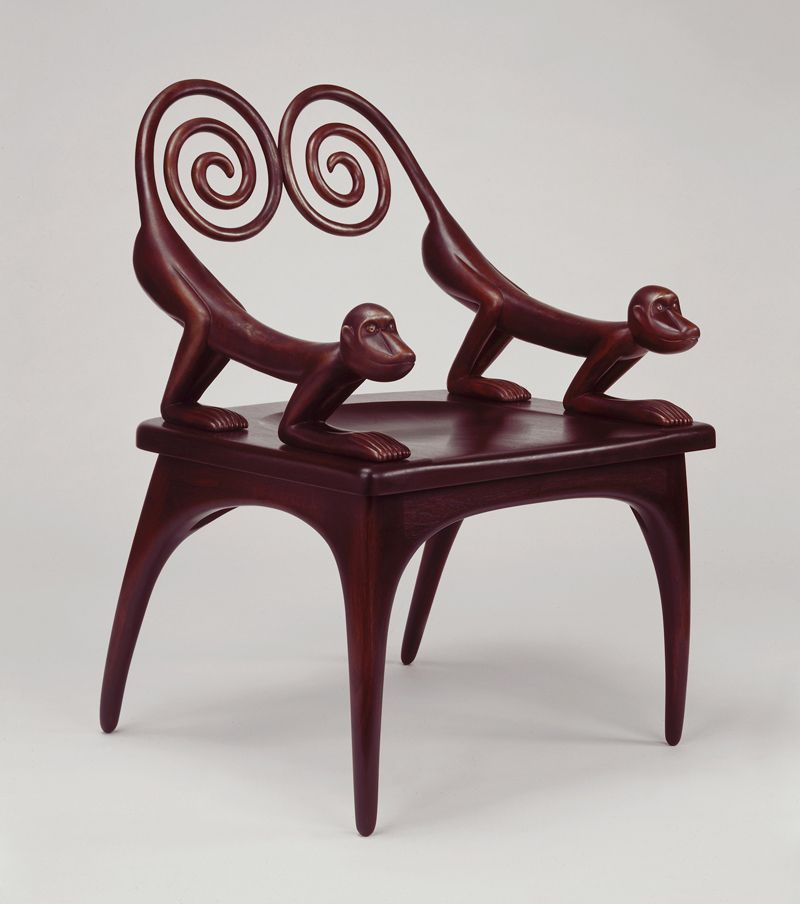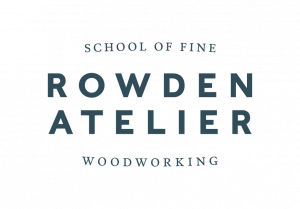Furniture Designer Judy Kensley Mckie, from Boston, MA, produces beautiful sculptural, yet functional, hand made furniture. Widely regarded by her contemporaries as one of the most inventive and expressive contemporary bespoke furniture makers, Judy is universally loved and respected.
Born in Boston in 1944 to graphic artist parents, Judy often helped her Father and brother to manufacture pieces, often being far more interested in the processes than her brother was, which she holds as one of the main influences in her decision to become a furniture maker.
Spending a few months on a graphic design course at Rhode Island School of Design before moving to a painting course which she stuck with as her chosen career path for a while; her life changed dramatically when she chose to build her life partner Todd McKie a table as a present – a simple table that they still own (though now it has been remodelled as a coffee table). This endeavour led to friends of the two artists asking for pieces to be made – the painter’s lifestyle was not particularly affluent so Judy took these opportunities, spurred with confidence from her childhood experiences of working with her father.
Soon Judy took up an opportunity to join a cooperative workshop ‘New Hamburger Cabinet Works.’ Here she was able to hone her craft skills; alongside contemporaries such as Michael Hurwitz, they worked on projects building kitchens and other utilitarian pieces in a bauhaus style sharing their progression with each other they all developed greatly. Eventually Judy was able to being working on more personal pieces of furniture inspired by the personalised design ethic of the African, Eskimo and Native American cultures, finding a muse in the forms of animals, forms she feels have life within them.
I remember I would sit in the living room and look at our own furniture, which was all very straightforward. Look at it for a long time, the way you might look at clouds in the sky. As I looked I saw the armrests starting to turn into animals, or I would see that a table had a stance that was like a four-legged creature, and I would think, that would be one way of bringing this stuff to life. I started looking carefully at a lot of animal forms, looking at a lot of primitive but incorporated animal imagery. The honesty of it and aliveness in primitive forms always appealed to me, so I wanted to get something of that into my work.
(Interview with Jonathan Binzen for Gallery NAGA, 2006)
Judy developed her methods naturally in the co-op, where members shared a machine shop as well as knowledge. Now Judy inhabits a wonderful light-filled corner studio inside a building occupied by the most recent incarnation of the co-op, in an industrial building near Cambridge. With two great windows and ample space to carve she is able to use the space to focus, with another area to put up drawings against one large wall.
Drawings occupy a large part of Judy’s studio space as this is a quintessential element of her working process, diving her time between two spaces; a drawing studio at her home and the “making studio” in the workshop. Her workbench occupies the centre of her workspace, with chisels and carving tools situated behind on a wall. At time Judy expresses a slight embarrassment with her working methods, knowing that they are unorthodox, yet though her practices are wildly unconventional, they do not appear to get in the way of the clear vision of what she is seeking to achieve.
Invited to contribute work to a touring exhibition “New Handmade Furniture” Judy’s reputation was effected profoundly and really cemented her path to becoming a recognised and highly regarded furniture designer maker – soon taking enquiries from all across the United States to recreate pieces seen in the exhibition. Yet this went against her artistic sensibilities, instead she would develop limited amounts of a piece or a theme and offer to make something new when these had been sold. It was this thinking that prevented her from becoming bored or overly self critical.
A little later Judy developed an ongoing relationship with Pritam and Eames Gallery in Long Island, New York, as well as with Gallery NAGA in Boston. She developed a pattern of making a body of work and then exhibiting every two years. This suits her development process as she devotes a surprising amount of time to drawing as the primary creative act; feeling a need to isolate herself from distraction, Judy retreats to her drawing studio at home, working with an intense focus upon furniture forms related through drawing. For several months, armed with a list of furniture types— tables, chairs, sideboards, and so on—she will draw and draw and draw.
While Judy acknowledges that she uses many different methods for her furniture, she has a natural reluctance to discuss individual pieces in detail, perhaps a response to the nature of the works themselves. Since they are intended to communicate on a profoundly visceral level, language is not necessary, and may even be a hindrance. The forms are as alive as stone or wood can get; they are totems of living beings created as objects to be close to us, to inhabit our homes, to accompany us, to be there when we are alone.
If you enjoyed this article and would like to read more about Judy Kensley McKie, pick up a copy of the book Furniture with Soul (£19.20 amazon.co.uk), in which 10 of David Savage’s favourite furniture designer makers are featured extensively alongside his favourite up and coming furniture designer makers.
